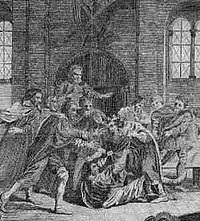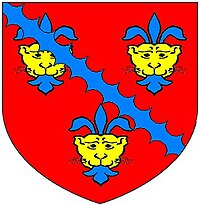Travel to Pucklechurch Map
Pucklechurch tourist guide map of landmarks & destinations by Walkfo
18
travel
spots
![]() When travelling to Pucklechurch, Walkfo’s has created a travel guide & Pucklechurch overview of Pucklechurch’s hotels & accommodation, Pucklechurch’s weather through the seasons & travel destinations / landmarks in Pucklechurch. Experience a unique Pucklechurch when you travel with Walkfo as your tour guide to Pucklechurch map.
When travelling to Pucklechurch, Walkfo’s has created a travel guide & Pucklechurch overview of Pucklechurch’s hotels & accommodation, Pucklechurch’s weather through the seasons & travel destinations / landmarks in Pucklechurch. Experience a unique Pucklechurch when you travel with Walkfo as your tour guide to Pucklechurch map.
Pucklechurch history

The land of Pucklechurch is relatively prominent in elevation compared to surrounding areas. It was selected in the Bronze Age as the site of a tumulus at Shortwood Hill.
Saxon royal villa or palace
Pucklechurch royal villa or palace was one of only a few in the Kingdom of Wessex. Adjoined on the west by a very large hunting forest, Kingswood, which was larger than today’s settlement of the same name. The palace became prominent in the two centuries before the Norman Conquest.
Domesday Book
The Domesday Book records these hides as belonging to St. Mary’s church, which was in Glastonbury Abbey’s grounds. There are sixty acres of meadow and woodland half a league long and a half broad. It was worth £20, now £30 per year.
Held by the Bishop of Bath & Wells and construction of the existing church
The large and fertile manor of Pucklechurch was held by the Bishop of Bath & Wells from 1275, who received it from Glastonbury Abbey. The church building largely dates to the 13th and 14th centuries, from the time when it was under the Bishop’s patronage.
Farmed to Denys family

The Bishop of Bath and Wells farmed the manor of Pucklechurch to Sir Gilbert Denys (d.1422) to save his see from the administrative burden of collecting all the rents in exchange for an annual one-off payment of £40. Denys held the farm until his death in 1422, although records are not available to confirm this. The manor was granted to William Herbert, 1st Earl of Pembroke at the Dissolution of the Monasteries.
Coal mining
Parkfield Colliery operated near Pucklechurch from 1851 to 1936. Bristol Archives hold documents detailing the leases and sale of the coal mining rights by Mary and Elizabeth Dennis.
World War II and RAF Pucklechurch
During World War II the No.11 Balloon Centre, a barrage balloon depot, was built here. This protected against the Blitz which, as anticipated by the British, included Nazi Germany targeting the docks of Bristol from various approaches near the village. After the war this became a non-flying Royal Air Force station called RAF Pucklechurch until 1959.
Prison
The Pucklechurch Remand Centre was built on the site of the RAF in 1962 and expanded in 1978. It was destroyed in a riot in 1990 and became Ashfield Young Offender Institution in 1999. In 2013 the Ministry for Justice announced it will become a closed adult prison dealing with sex offenders.
Pucklechurch map & travel guide with history & landmarks to explore
Visit Pucklechurch Walkfo Stats
With 18 travel places to explore on our Pucklechurch travel map, Walkfo is a personalised tour guide to tell you about the places in Pucklechurch as you travel by foot, bike, car or bus. No need for a physical travel guide book or distractions by phone screens, as our geo-cached travel content is automatically triggered on our Pucklechurch map when you get close to a travel location (or for more detailed Pucklechurch history from Walkfo).
| Travel Location: Travel Area: | Pucklechurch [zonearea] | Audio spots: Physical plaques: | 18 0 | Population: | [zonesize] |
|---|
Average seasonal temperatures at zone
Tourist Guide to Pucklechurch Map
Pucklechurch map historic spot | Pucklechurch map tourist destination | Pucklechurch map plaque | Pucklechurch map geographic feature |
| Walkfo Pucklechurch travel map key: visit National Trust sites, Blue Plaques, English Heritage locations & top travel destinations in Pucklechurch | |||